Building lean muscle is often high on everyone’s agenda when they start a programme or begin their fitness journey. In the media it is termed all sorts of things like toning, sculpting, getting lean, to name a few but ultimately the goal is to increase lean muscle mass (and this does not mean bulking up). Strength training will help you achieve this goal alongside increasing functionality, slowing down or offsetting the natural ageing process, increasing bone density, boosting mood and so much more (take a look at this blog for the full low down on the benefits).
The process of building muscle is called hypertrophy. It happens in several phases initiated by strength training or putting the muscles under tension and force. From a physiological perspective there are two main ways of achieving hypertrophy:
- Increasing the number of myofibrils in a muscle fibre (myofibrils are the interconnected protein filaments that make up muscle fibre). Myofibrils make up the units which cause the contraction and relaxation of muscles. By increasing the number of myofibrils you increase the strength of the muscle with some increase in the size of the muscle.
- Increasing the muscle cell fluid which surrounds the myofibril. This contains water, ATP (the energy producing molecule) and other substances which produce and store energy. This is called sarcoplasmic hypertrophy which gives the muscles a larger appearance.
To achieve hypertrophy or muscle growth there are 3 main mechanisms:
- Mechanical tension – this is the force or load that works against our muscles during contraction. This is your dumbbell or resistance band during an exercise.
- Muscle damage – this occurs when we do a movement for the first time, change the technique, increase the volume of work or increase the load on the muscle. It sounds dangerous but when done in a controlled fashion (e.g. a gradual increase in weight over time or adding a couple of reps to a set to challenge the muscle) it causes micro-damage to the muscle and as it rebuilds it grows stronger than it was before. The key is not too much damage – so increase gradually and start gently.
- Metabolic stress – this is the burn you feel at the end of a set or towards the end of a circuit. It is the build up of metabolites in the muscle from all the hard work it has been doing.
These three mechanisms all prompt our bodies to release hormones such as growth hormone or testosterone which work to increase protein production and limit muscle breakdown. These are essential for the growth and repair of our muscles. These hormones also tell our satellite cells to activate (these cells are found outside our muscles and cause our muscles to repair muscle damage by fusing the fibres back together but longer and stronger than before – making them a bit bigger).
So, what can we do to help the process and aid our bodies in growing stronger, lean muscles? There are a few things that we can do that will really make a difference:
- Eat enough protein – this is essential for muscle growth. Take a look at this recent blog all about how much protein you really need at each stage of life.
- Eat in a calorie surplus (I know this sounds counterintuitive but bear with me) – you need the energy to grow and repair and rebuild the muscle. The amount of surplus is dependent on training volume and goals but a small surplus will put your body into an anabolic state (growth state) to enable it to build muscle.
- Don’t go for low carb diets – carbs will be used for energy when you are training and going about your daily life which frees the protein up to build the muscle. If you are short on carbs your body will use the protein for energy and not for muscle building. The key here is a healthy, balanced diet with plenty of protein!
- Include the compound exercises – anyone who has followed along for a while will know I am a huge fan of these because they are so beneficial for your body. I am talking squats, lunges, rows, press up etc. These require a lot of energy, they use the more than one muscle group at a time and produce a greater hormonal response (stimulate more muscle growth) than isolated exercises.
- Focus on progressive overload – this means keep challenging yourself. You must continue to challenge the muscles to keep them working hard to adapt and respond to the training stimuli. Take a look at this recent blog on when to increase weights to understand more on this point.
- Focus on recovery – if you don’t give your muscles time to recover and repair they won’t be able to grow stronger and larger. So, change up which muscle groups you train on which day. This is the reason whyI have designed the classes on specific days in my program: Monday Full Body, Tuesday upper body, Wednesday lower body and Friday whole body. This gives the muscles a chance to recover between sessions and deliver optimum performance in the next workout.
- Consistency – you can’t expect results overnight but with consistent effort and work you will certainly see them. You need to think of it as a lifestyle choice not a quick fix and you will certainly reap the rewards.
So in conclusion I want to reiterate that you are on a continuous journey with your fitness and it is YOUR journey! If you focus on getting stronger and being more active it is a sure-fire way to ensure that you future proof your body, enhance your wellbeing and mood. Remember to set yourself realistic goals, expectations and timeframes when it comes to your fitness journey as this will keep you both motivated and consistent for the long haul.
Caroline x







